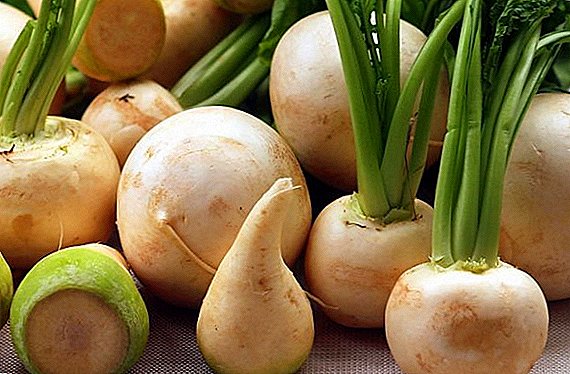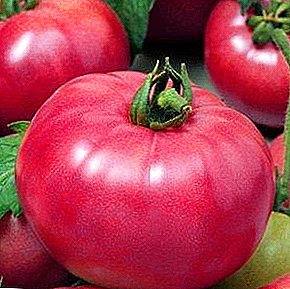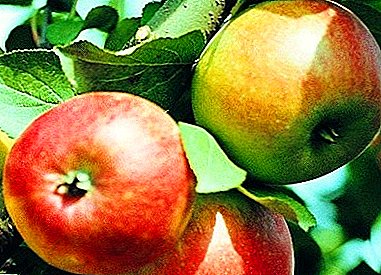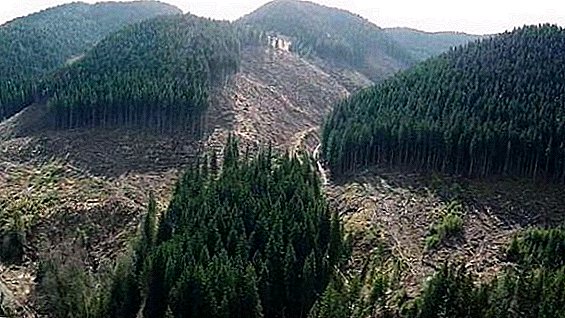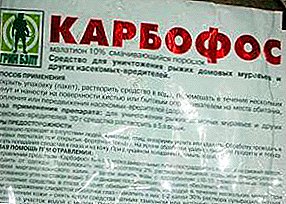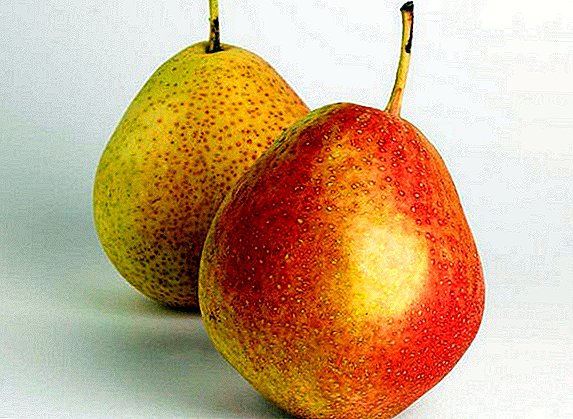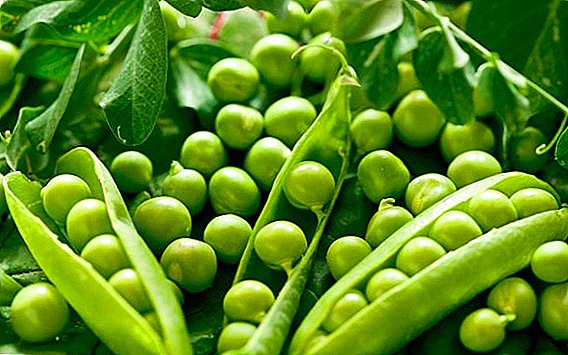 Nowadays it is difficult to find a plot where it does not grow. peas. Everyone knows about the taste and useful properties of this culture, that's why adults and children love it so much. Also, as in beef, it contains a huge amount of vegetable protein, which is much easier to digest. Fresh, green peas include vitamins B, PP, C, carotene, phosphorus, iron, and lysine. For people who suffer from cardiovascular diseases, the use of peas is mandatory, especially since the cultivation of this plant does not require much space (it can be planted along the fence). This article presents the basic rules of pea care and planting in open ground..
Nowadays it is difficult to find a plot where it does not grow. peas. Everyone knows about the taste and useful properties of this culture, that's why adults and children love it so much. Also, as in beef, it contains a huge amount of vegetable protein, which is much easier to digest. Fresh, green peas include vitamins B, PP, C, carotene, phosphorus, iron, and lysine. For people who suffer from cardiovascular diseases, the use of peas is mandatory, especially since the cultivation of this plant does not require much space (it can be planted along the fence). This article presents the basic rules of pea care and planting in open ground..
Pea: a characteristic of culture
 Many still wonder: are peas beans or not? He really belongs to the legume family, other information is erroneous. The branching stalks of the plant reach 250 cm. The stalk is hollow and the leaves are pinnate, complex. Scape, on which there are tendrils, cling to the support, and thus keep the culture in an upright position. Pea root has a deep structure. The flowers are usually white, but they are also purple. Due to their ability to self-pollinate, they bloom 45-55 days after sowing. In the early varieties of peas, at the first flowering you can see 7-8 sheets of sinus, and up to 24 leaves - in later varieties.
Many still wonder: are peas beans or not? He really belongs to the legume family, other information is erroneous. The branching stalks of the plant reach 250 cm. The stalk is hollow and the leaves are pinnate, complex. Scape, on which there are tendrils, cling to the support, and thus keep the culture in an upright position. Pea root has a deep structure. The flowers are usually white, but they are also purple. Due to their ability to self-pollinate, they bloom 45-55 days after sowing. In the early varieties of peas, at the first flowering you can see 7-8 sheets of sinus, and up to 24 leaves - in later varieties.
Every two days there are new flower stalks. Characteristic peas can not do without a description of the fruit. They are beans, and depending on the plant variety, have a different shape and color. Beans contain up to 10 wrinkled or smooth seeds, and their color is the same as the peel of the pod. During the growth of a plant, useful bacteria develop on its roots, and nitrogen also appears, which absorbs peas from the atmosphere (this nourishes the soil).
Choosing a place for planting peas in the garden
Peas are picky about the place of planting, so the cultivation of this crop should be started with its choice. When selecting a site, you should pay attention to the soil, the neighbors of the plant, lighting, heat, and climatic conditions.
Climatic conditions for growing peas
 In order for a pea plant to develop well, it is important to create suitable conditions for it. The plant is very fond of moisture, so that the seeds evenly swell, and there were friendly shoots, the peas need to be planted early in a moist soil. Due to the large amount of precipitation, the plant grows faster and yields increase. During the period of budding and flowering, moisture is especially necessary. If water is scarce, the plant sheds ovaries and flowers.
In order for a pea plant to develop well, it is important to create suitable conditions for it. The plant is very fond of moisture, so that the seeds evenly swell, and there were friendly shoots, the peas need to be planted early in a moist soil. Due to the large amount of precipitation, the plant grows faster and yields increase. During the period of budding and flowering, moisture is especially necessary. If water is scarce, the plant sheds ovaries and flowers.
However, the peas do not like if the groundwater is too high. He is ready to endure a short drought, as the strong root system of peas uses moisture from deep layers of soil. Peas are unpretentious to heat and seeds germinate at a temperature of + 5 ° С. The seedlings are able to tolerate frosts up to -6 ° С, and the optimum temperature for the formation of the plant ovaries is + 13 ... + 15 ° С, for bean growth - from +17 to + 22 ° С.
What kind of soil loves peas
Pea loves when the soil is well processed and sufficiently moist. If the selected soil for planting is sour, then first it is necessary to lime. This will require 300 g of hydrated lime or 400 g of dolomite flour per 1m². An ideal place for planting will be loam-rich humus, as well as well-fertilized, moist soil.
Best pea neighbors
Before planting pea seeds, keep in mind that previous plants that grew in the same place, quite a strong influence on the crop. It is best to plant the described crop after potatoes, carrots, beets, cucumbers, tomatoes, and pumpkins.
Important! After other legumes, for example, beans, lentils, soybeans, peanuts, planting peas in this area is not worth it.
Peas should not be returned to the place where it grew last year, since there is a high probability that the plant will be affected by diseases and pests, therefore, the possible dates for planting peas in the same area are no earlier than in 3-4 years.
Features planting peas at their summer cottage
In order to properly plant the peas, and he brought a big harvest, you first need to carry out the preparatory work. They consist of soil preparation, seed preparation and the planting itself.
How to prepare the soil for planting peas
 When preparing the soil, it should first be leveled and watered properly, and moistened again before the direct planting of peas. Further in the soil it is necessary to make grooves with a depth of 6 cm, keeping the distance between the beds of at least 20 cm.
When preparing the soil, it should first be leveled and watered properly, and moistened again before the direct planting of peas. Further in the soil it is necessary to make grooves with a depth of 6 cm, keeping the distance between the beds of at least 20 cm.
Important! Planting time for peas does not have strict restrictions, but experienced gardeners recommend planting crops when warm weather sets in, that is, closer to May.
Preparing peas for planting
Before planting the plants also need to know how to choose the seeds of peas. Consider that only high-quality, healthy seeds are required for planting. Feeble, sick and infested with pea weevil specimens should not be planted.
Did you know? For the convenience of selecting high-quality seeds, they can be placed in a saline solution and select only those that have sunk to the bottom. Saline solution is quite simple: 1 tablespoon of salt to 1 liter of water.
Since before planting you need to germinate the seeds of peas, you will need to perform some more simple actions. After selecting the seeds, they should be soaked in warm water and left to swell for 16 hours, changing the water every three hours. After soaking the seed material, it is dried to a friable state.
How to sow peas
 Peas do not require the use of any special agricultural technician and the planting pattern is quite simple. Before placing the seed material in the ground, in the beds should be made furrows 6-7 cm deep. The distance between them should be 45-55 cm. A mixture of compost and ash is put into each furrow, then it is sprinkled with earth, but to keep the depth of the pit 2-3 cm. For one meter of furrow, 17-18 seeds will be required, thus the distance between the pea seeds will be up to 6-7 cm. Next, the seed pit must be densely covered with earth, which will help retain moisture.
Peas do not require the use of any special agricultural technician and the planting pattern is quite simple. Before placing the seed material in the ground, in the beds should be made furrows 6-7 cm deep. The distance between them should be 45-55 cm. A mixture of compost and ash is put into each furrow, then it is sprinkled with earth, but to keep the depth of the pit 2-3 cm. For one meter of furrow, 17-18 seeds will be required, thus the distance between the pea seeds will be up to 6-7 cm. Next, the seed pit must be densely covered with earth, which will help retain moisture.
Did you know? As the seeds of pea germinate you will not see, but the first shoots appear in 7-10 days.
To protect the pea seeds from birds, it is recommended to cover the area with the sowing with fishing nets or with a translucent film.
Pea cultivation technology, plant care features
Proper care of the peas is no less important than proper planting. Watering, loosening the soil, feeding, garter bushes - all this undoubtedly affects the crop yield.
First actions after sowing
 On what day the first stalk of peas will appear, first of all, depends on the regularity of the introduction of liquid into the soil. Proper and abundant watering - this is the main care of the plant. After sowing, you need to carefully monitor that the peas have enough moisture. If it is not enough, the plant will die, not having time to show the first shoots. While fruits are ripening in the lower part, peas are blooming in the middle, and the tip is still growing and forming buds, watering is especially important for the normal development of the plant.
On what day the first stalk of peas will appear, first of all, depends on the regularity of the introduction of liquid into the soil. Proper and abundant watering - this is the main care of the plant. After sowing, you need to carefully monitor that the peas have enough moisture. If it is not enough, the plant will die, not having time to show the first shoots. While fruits are ripening in the lower part, peas are blooming in the middle, and the tip is still growing and forming buds, watering is especially important for the normal development of the plant.
Important! Too abundant watering - also not very goodespecially when beans are formed. This can lead to the spread of disease.
Soil care
During the period of active growth of peas, it is necessary to pay special attention to loosening the soil between the rows. Only in this way, the roots and nodule bacteria will be able to receive such necessary oxygen. At the first shoots, reaching a height of 6 cm and forming 4-5 leaves, the beds will need to be harrowed, but this should be done at a time when the ground is dry. This is necessary in order not to damage the root system. Despite what will be the compaction of the soil and the growth of weeds during the growing season, loosening between rows should be carried out up to 3 times (to a depth of 7 cm).
Features feeding peas
 Fertilizer must be applied under the pea to increase the yield, stimulate the flowering of the plant and to tie the beans. At the first emergence of seedlings, peas should be fed with infusion of weeds. This is necessary when the work of nodule bacteria is still too weak and the plant suffers from a lack of nitrogen. Fertilizing with mineral fertilizers during fruit set and before flowering will be very useful. In the first case, it is recommended to water the plants with a solution of complex fertilizer (3 g per 1 liter of water). It is necessary to water between rows, without falling on the leaves of the plant. Before flowering, peas are better to feed dry fertilizer, at the rate of 25 g per 1 m².
Fertilizer must be applied under the pea to increase the yield, stimulate the flowering of the plant and to tie the beans. At the first emergence of seedlings, peas should be fed with infusion of weeds. This is necessary when the work of nodule bacteria is still too weak and the plant suffers from a lack of nitrogen. Fertilizing with mineral fertilizers during fruit set and before flowering will be very useful. In the first case, it is recommended to water the plants with a solution of complex fertilizer (3 g per 1 liter of water). It is necessary to water between rows, without falling on the leaves of the plant. Before flowering, peas are better to feed dry fertilizer, at the rate of 25 g per 1 m².
Bushes garter
Since the pea stalks are rather weak, and at the first appearance of the fruit, the plant falls from gravity, it needs garter bushes to support. In the role of support use metal rods or wooden pegs that need to stick along the row, at a distance of 1.5 meters from each other. On pegs or rods, you need to tighten the rope or wire in a horizontal direction. Shoots with tendrils are supported on the rope. This is necessary so that the peas are aired and warmed up.
The main diseases and pests of peas
 The most common pests of the pea are the moth, garden and cabbage moth, and the pea moth. Shells and scoops lay eggs on pea leaves. Caterpillars scoops, even those that have just hatched, eat the ground part of the plant. Larvae moths, wrapped in leaves to feed them. But the pea butterfly - moth, lays eggs on the leaves and fruits. After a week, they become food for the larvae. Powdery mildew and mosaic are among the main diseases that can cause peas.
The most common pests of the pea are the moth, garden and cabbage moth, and the pea moth. Shells and scoops lay eggs on pea leaves. Caterpillars scoops, even those that have just hatched, eat the ground part of the plant. Larvae moths, wrapped in leaves to feed them. But the pea butterfly - moth, lays eggs on the leaves and fruits. After a week, they become food for the larvae. Powdery mildew and mosaic are among the main diseases that can cause peas.
The first is a fungal disease that covers with a loose, white bloom, first the bottom of the plant, and then the whole crop. After that, the fruits die, and the shoots with leaves turn black and die. Mosaic is an incurable, viral disease, the appearance of which can be avoided by observing crop rotation and appropriate treatment of seed. Slow growth, the appearance of teeth at the edges of leaves, as well as their curliness are all signs of a mosaic.
Peas: how to get a rich harvest
Harvest can be by the end of June. How much pea grows also depends on how much the plant grows and blooms. If it bloomed early, then the peas ripen faster.
Did you know? After flowering, when the first fruits ripen in the lower part of quickly ripe plants, to harvest sugar varieties getting down about a week and a half. It is then that the most sweet and delicious peas.
 Collect peas, you need when his blades ripen and you can remove the filled, not overripe beans. The valves have juicy and green, and grains in length reach up to 8 mm. In warm weather, it is better to collect peas on a scoop as often as possible (for example, every 2 days), while in cool weather - it is enough every 4 days. If you gather ripe peas at the wrong time, then there will be a slowdown in the ripening of the next fruit. Harvesting is best in the morning when it is not too hot outside, otherwise pea pods may quickly wither.
Collect peas, you need when his blades ripen and you can remove the filled, not overripe beans. The valves have juicy and green, and grains in length reach up to 8 mm. In warm weather, it is better to collect peas on a scoop as often as possible (for example, every 2 days), while in cool weather - it is enough every 4 days. If you gather ripe peas at the wrong time, then there will be a slowdown in the ripening of the next fruit. Harvesting is best in the morning when it is not too hot outside, otherwise pea pods may quickly wither.


